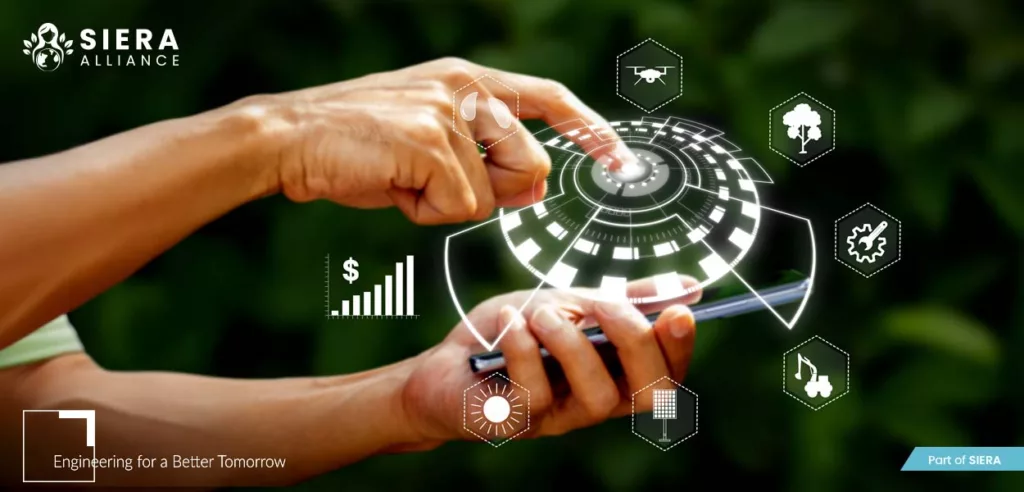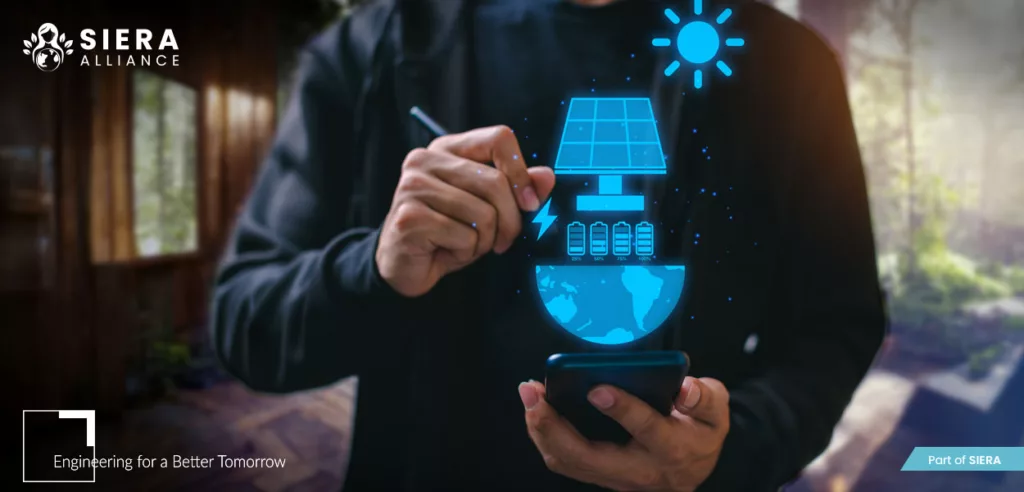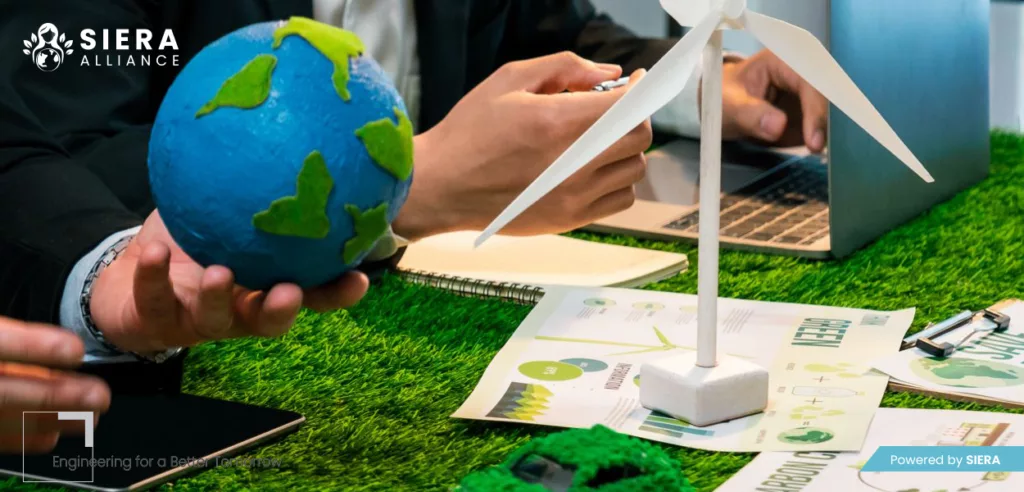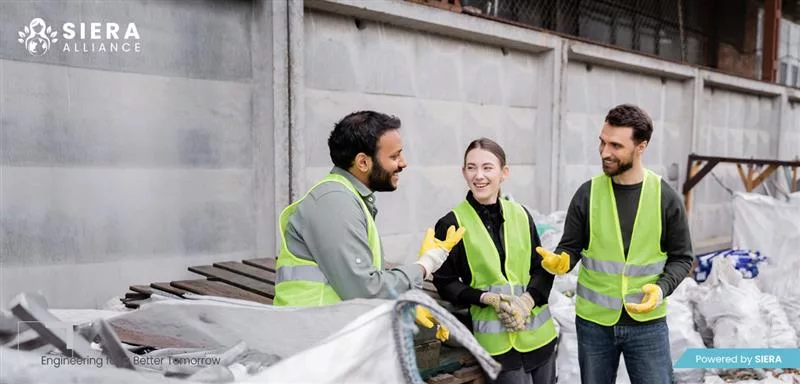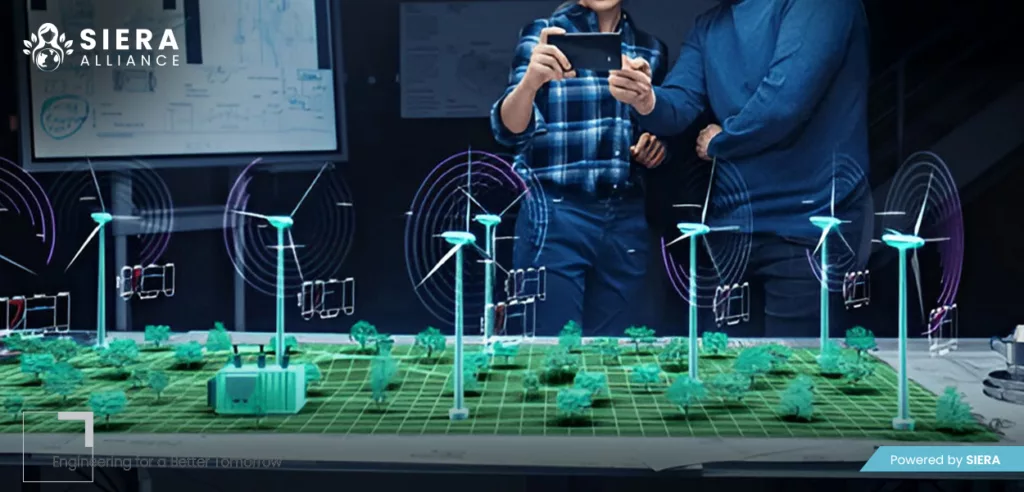As the global climate crisis accelerates and environmental degradation threatens ecosystems and communities alike, industries are being called upon to radically transform the way they operate. At the heart of this transformation lies sustainable manufacturing — a paradigm shift that balances productivity and profitability with environmental stewardship and social equity.
What is Sustainable Manufacturing?
Sustainable manufacturing is the production of goods through eco-conscious processes that minimize environmental harm while promoting energy efficiency, resource conservation and the well-being of communities.
Key Pillars of Sustainable Manufacturing:
- Environmental Protection: Reducing emissions, waste and pollution.
- Economic Viability: Enhancing resource efficiency and lowering costs.
- Social Responsibility: Supporting safe, equitable and ethical practices across the value chain.
Why Sustainable Manufacturing Matters
1. Environmental Imperatives
Manufacturing and production operations account for nearly 20% of global greenhouse gas emissions. Unchecked industrial processes deplete finite resources, pollute air and water, and contribute to biodiversity loss. Sustainable manufacturing addresses these issues by:
- Transitioning to renewable energy sources.
- Utilizing closed-loop systems to minimize waste.
- Reducing reliance on virgin raw materials.
2. Economic Opportunities
Sustainable practices open new markets, reduce material costs and improve risk management capabilities. Resource efficiency can boost operational profits by up to 60% in certain sectors. Moreover, green innovation attracts new investors, consumers and partners who prioritize environmental responsibility.
3. Regulatory Compliance
Regulations such as the EU Industrial Emissions Directive and the Carbon Border Adjustment Mechanism (CBAM) are tightening environmental standards. Companies that proactively adopt sustainable manufacturing will be better positioned to meet compliance obligations and avoid penalties now, and in the future.
4. Workforce and Community Impact
Safe, inclusive and ethical manufacturing practices not only protect workers but also build trust with local communities while enhancing brand loyalty.
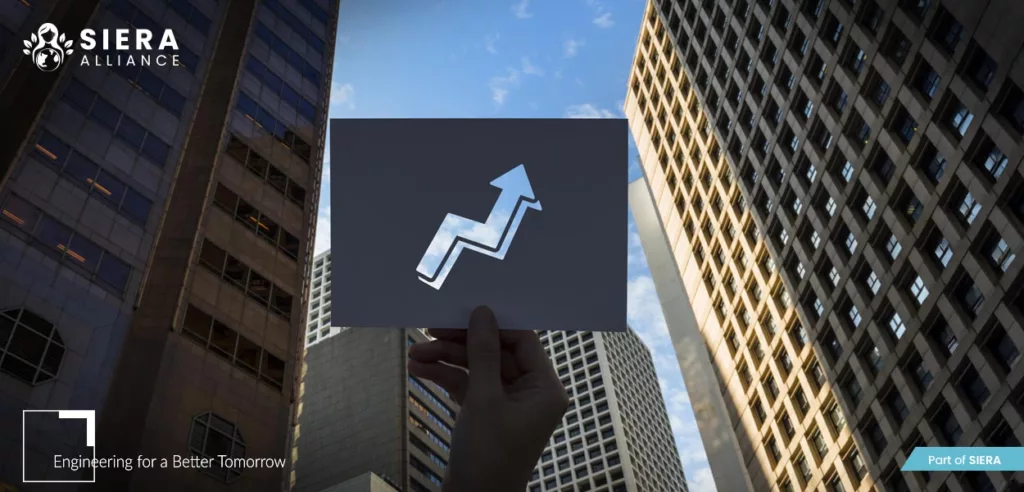
Core Strategies for Implementing Sustainable Manufacturing
1. Energy Efficiency and Decarbonization
- Invest in smart factory technologies like Internet of Things (IoT) sensors and AI-driven automation to optimize energy usage.
- Switch to low-carbon fuels and ensure electrification of processes.
- Implement Energy Management Systems (EnMS) aligned with ISO 50001.
2. Circular Economy Integration
- Design products for durability, reparability and recyclability.
- Use recycled and bio-based materials wherever feasible.
- Establish reverse logistics to recover materials post-consumer use.
- Enable remanufacturing and refurbishment as value-adding practices.
3. Sustainable Supply Chain Management
- Engage suppliers through code of conduct frameworks and environmental audits.
- Promote local sourcing to reduce transportation (Scope 3) emissions.
- Track materials with blockchain or digital product passports to ensure ethical sourcing.
4. Water and Waste Management
- Deploy closed-loop water recycling systems.
- Minimize solid waste via lean manufacturing and industrial symbiosis.
- Reduce hazardous chemicals through green chemistry and substitution programs.
5. Digitalization and Industry 4.0
- Use predictive maintenance to extend equipment life and reduce downtime.
- Apply digital twins for real-time simulation and energy optimization.
- Monitor sustainability metrics with ESG dashboards.
Certifications and Frameworks That Guide Sustainability
Organizations can align and benchmark their sustainability efforts using internationally recognized frameworks:
- ISO 14001: Environmental Management Systems.
- ISO 50001: Energy Management Systems.
- EMAS: Eco-Management and Audit Scheme.
- Science-Based Targets initiative (SBTi)
- Global Reporting Initiative (GRI)
- Product Environmental Footprint (PEF) methodology
These tools provide standardized metrics, improve transparency, and help companies credibly communicate their sustainability progress.
Case Studies: Transformative Impact of Sustainable Manufacturing
Case 1: Siemens’ Decarbonized Production
Siemens integrated sustainable manufacturing at its electronics plant in Amberg, Germany. Through energy-efficient equipment, solar power and AI-controlled production, the facility achieved a 50% reduction in energy use per product and cut overall emissions by over 60%.
Case 2: IKEA’s Circular Design in Furniture Manufacturing
IKEA committed to becoming a climate-positive business by 2030. It uses recycled wood, biodegradable textiles, and modular designs to extend product life. Their factory in Zbaszynek, Poland, operates on 100% renewable electricity, showcasing full-facility sustainability.
Case 3: BMW’s Sustainable Mobility Production
BMW’s Leipzig plant produces electric vehicles using hydropower and wind energy and has incorporated closed-loop aluminum and battery recycling systems, reducing dependency on virgin materials.
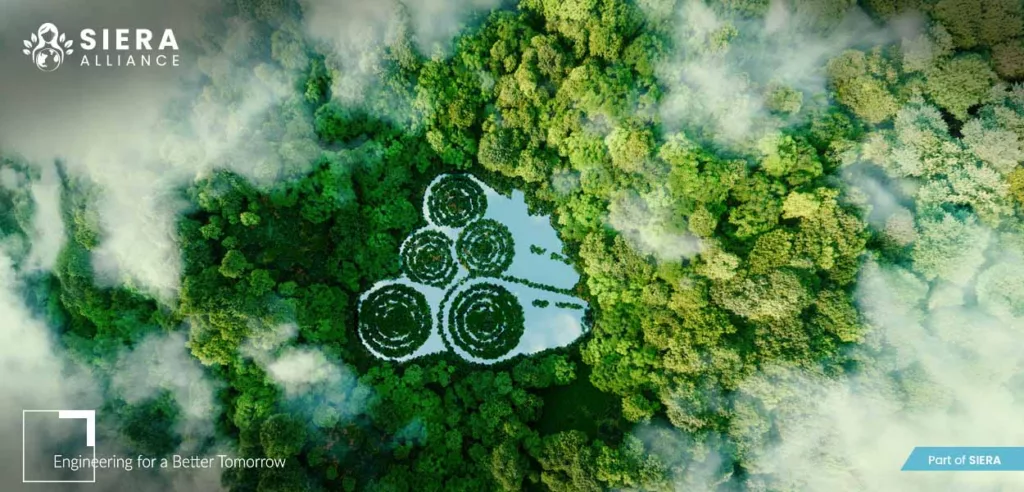
Addressing Challenges to Implementation
While sustainable manufacturing promises increased efficiency and long-term resilience, industries face several practical hurdles when shifting from conventional to sustainable models. These challenges stem from financial, technical, organizational and systemic limitations. Below are the most common barriers — and actionable solutions that can support a smoother transition.
1. High Upfront Costs for Technological Transitions and Facility Retrofits
Retrofitting older facilities and investing in green technologies and energy-efficient systems often requires significant capital, which can be a deterrent for small-and medium-sized enterprises (SMEs), or companies operating with thin margins. However, businesses can bypass these challenges by:
- Leveraging Green Financing Mechanisms: Access funding through the EU Innovation Fund, Horizon Europe grants, or green bonds tailored to decarbonization and circular economy initiatives.
- Adopting Phased Implementation Plans: Spread investments over multiple phases, prioritizing high-impact and quick-return interventions first (e.g., energy optimization or digital monitoring).
- Engaging in Public-Private Partnerships (PPPs): Collaborate with governments, NGOs and private investors to share costs, reduce risks and gain access to shared infrastructure.
2. Skill Gaps in the Workforce for Managing Advanced Sustainability Tools
The introduction of digital twins, energy modeling software, circular design platforms and life cycle assessment tools demands a skilled workforce—which is often lacking. To overcome this challenge, organizations must:
- Invest in Workforce Upskilling: Partner with vocational institutes and technical universities to create sustainability-centric training modules and certification programs.
- Embed Continuous Learning: Integrate ongoing sustainability education into company culture through webinars, e-learning and hands-on workshops.
- Foster Cross-Sector Talent Exchange: Temporarily bring in external experts through fellowships or advisory roles to accelerate internal capacity building.
3. Lack of Supplier Transparency and Alignment
Supply chains are often opaque and fragmented, making it difficult to verify sustainability metrics or ensure alignment with the company’s environmental goals. However, to achieve sustainable manufacturing, this must be addressed by:
- Adopting Digital Supply Chain Platforms: Use blockchain or IoT-enabled platforms for traceability and real-time monitoring of supplier practices.
- Implement Supplier Codes of Conduct: Require sustainability disclosures and third-party certifications (e.g., ISO 14001, EcoVadis) as part of procurement criteria.
- Engage Suppliers Through Collaborative Platforms: Facilitate joint workshops, pilot projects and incentive-based schemes that encourage shared goals across the value chain.
4. Complexity in Measuring Long-Term Outputs Like Life Cycle Impact
Quantifying the long-term environmental and social impacts of manufacturing processes is technically complex and often lacks proven methodologies. Nonetheless, businesses do have access to several resources like:
- Standardized Tools and Frameworks: Refer to recognized metrics like Life Cycle Assessment (LCA), Product Environmental Footprint (PEF) or the Global Reporting Initiative (GRI) standards.
- Digital Sustainability Dashboards: Integrate real-time data analytics and visualization tools, like SustainSuite, that make tracking and reporting more accessible and transparent.
- Industry Benchmarking Initiatives: Join alliances or sector-specific working groups to share data and establish baselines for comparable metrics.
5. Resistance to Change in Legacy Systems and Organizational Cultures
Established industrial players often resist change due to entrenched processes, risk aversion, or a lack of internal alignment on sustainability priorities. However, addressing legacy cultures and systems is essential to completing a successful sustainability transformation. Businesses must:
- Secure Executive Buy-In Through Impact Demonstration: Use data-driven pilot programs to demonstrate value in cost savings, efficiency and brand reputation.
- Embed Sustainability in Corporate Governance: Integrate ESG objectives into board-level KPIs, job descriptions and incentive structures.
- Foster a Culture of Innovation: Encourage intrapreneurship through internal sustainability challenges, recognition programs and employee-led green initiatives.
By tackling these barriers through strategic, financial and cultural levers, industries can accelerate the transition toward sustainable manufacturing. Tailored roadmaps, collaboration across ecosystems and strong leadership are essential to overcome inertia and build resilient, future-ready production systems.
Future Trends in Sustainable Manufacturing
- AI and Automation for ESG Optimization: Advanced Artificial Intelligence programs can predict emissions hotspots, optimize material flows and support dynamic ESG reporting.
- Biomanufacturing and Green Chemistry: Biotechnology can be leveraged to replace petrochemicals with bioplastics, enzymes and bio-fabricated textiles.
- Decentralized and Modular Manufacturing: Local, on-demand production units powered by renewable energy can help reduce global freight emissions.
- Additive Manufacturing (3D Printing): Reduce material waste and enable personalized, zero-inventory production.
- Digital Product Passports: By 2030, products sold in the Europe Union will include digital records tracing origin, material composition and carbon footprint.
Building a Legacy of Sustainable Industry
Sustainable manufacturing has become a strategic imperative for long-term resilience, competitiveness and market credibility. SIERA Alliance stands as a catalyst for this transformation, empowering manufacturers to lead with integrity, create shared value and shape a regenerative industrial future aligned with planetary boundaries and societal well-being.

